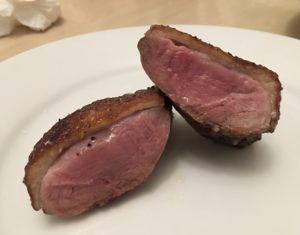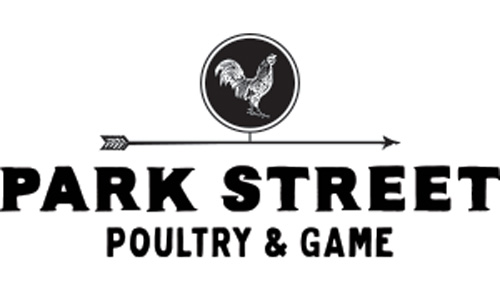
We talk a lot on our social media pages about how amazing a seared duck breast is – but it can be tricky if you’re new to the process – it’s different than a steak, and overcooking it can really ruin the experience.
But if you treat it right, you will be blown away by the result. This is the type of thing you can make for a date, an anniversary, a birthday, or just a Wednesday, because it’s fast – and also incredibly special. Read on.
There are two ways you can prep your duck breast. First, take your fully thawed duck breast out of the package, and pat dry with a paper towel.
Season both sides with generous salt and freshly ground pepper – and maybe a little crushed juniper berry and orange zest too if you’re feeling fancy.
Then you have options. You can sear it right away, or you can let it dry for a while so the skin is extra crispy.
To do this, place the duck breast skin side up on an uncovered baking tray, in your fridge for 12-36 hours. The salt you put on will draw the moisture out of the skin, and make it darker in color and dryer in texture. It will also allow the duck to develop in flavor.
To sear – make sure the duck breast (or any meat for that matter) is at room temperature before it’s cooked.
Add a little oil, butter, or rendered duck fat to a heavy bottom stainless steel pan or iron skillet – olive oil will work, but we recommend an oil with a higher smoke point – you want your pan nice and HOT.
Lay the duck breast skin side down. It should immediately begin to sizzle, and the fat will begin to render off the breast, until it’s searing in about a quarter inch of duck fat.
Let it sear for about 5 minutes, or until that side is a deep golden brown. Flip the duck breast and cook until golden brown on the other side.
Using a meat thermometer, check the internal temperature of the meat. You want to take the breast off the heat when it’s about 150 degrees inside, then let it rest, uncovered, for about 10 minutes. It will continue to cook for a few minutes internally, and settle at a perfect medium to medium rare. We know, this is counter intuitive for poultry, but this is how you want to eat it. It will be tender, buttery, and flavorful. Serve it with a nice steak knife and fork.
You can experiment with different herbs and flavor combinations, adding them to the fat as the duck cooks, or making a pan sauce with the leftover rendered fat. Either way, you will be so proud of what you made and how good it is, we promise. Enjoy!
